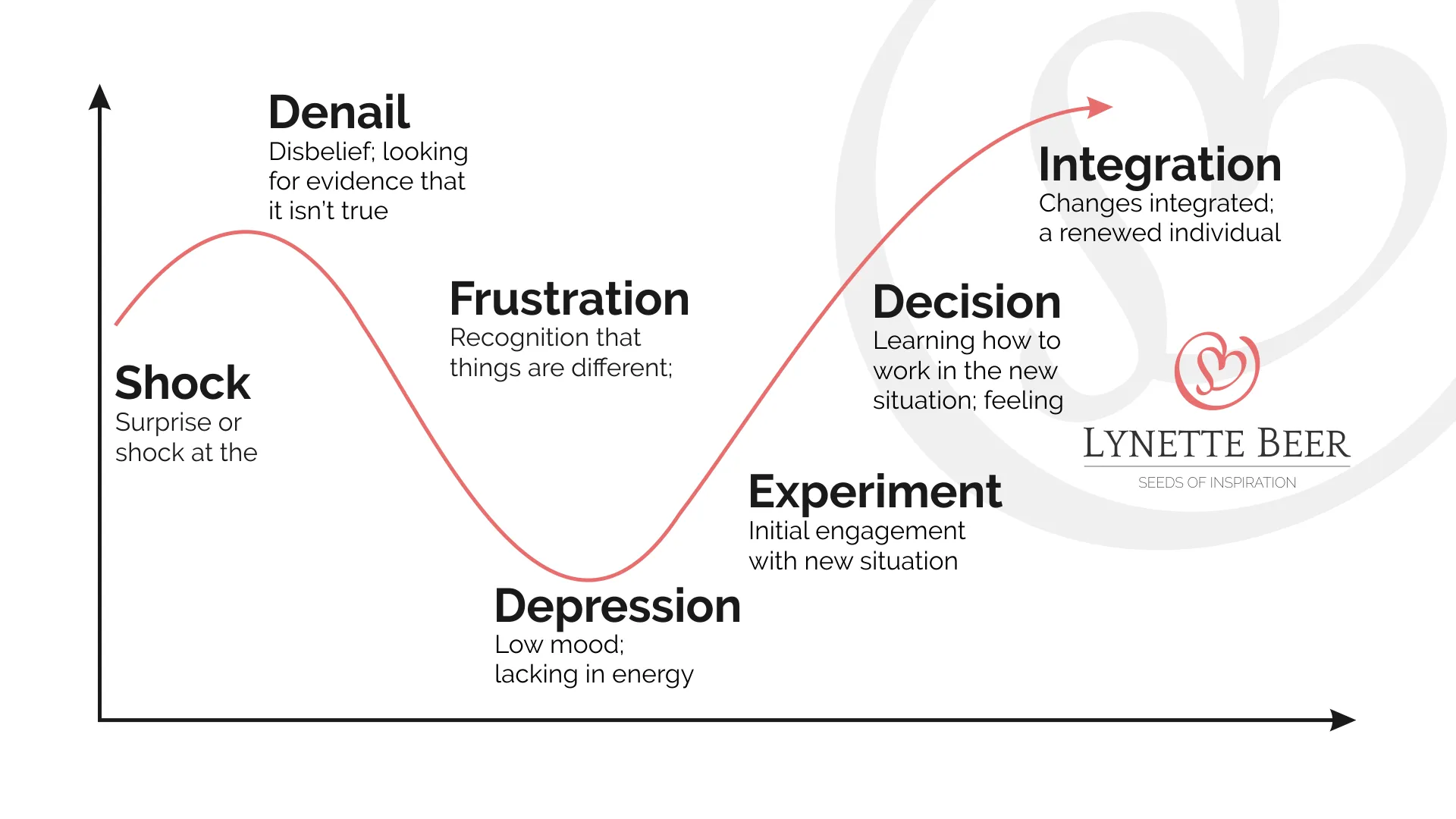The Swiss-American psychiatrist, Elisabeth Kübler-Ross became known for her near-death studies, assisting people with the painful process of dying and mourning, In her internationally best-selling book, On Death and Dying (1969), she discussed her theory of the five stages of grief, experienced by a person who is approaching death or who has lost a loved one.
The adapted “Kübler-Ross model” has become a popular tool, used by therapists and business consultants, to help people cope with the emotional challenges of the present pandemic. The Kubler-Ross Change Curve depicts the various stages of emotions which are experienced by most people, coping with the demands of the COVID-19 virus.
Change is in a way a form of mourning because it asks of us to adapt to a new kind of life, unknown to us. Know that it is normal to go through each phase and to get stuck in one or more of them. Ask yourself where in this curve you find yourself at the moment:
It starts with the initial shock at the event or crisis. In this case, the announcement of our Lockdown situation, limiting people’s movement and activities.
Then follows denial – the disbelief, trying to find evidence that it is too bad to be true.
The next step is frustration and anger, realising that you have little or no control.
The curve reaches its lowest point when depression sets in. This results in a lack of energy and a dark mood.
Experimenting is the first step towards discovery – when you decide to engage with the new situation.
A decision is the next step forward on the road to positivity when you learn to make the best of the situation and start working towards a solution.
Integration is when you reach the top of the curve, accepting what has happened and resolved to adapt to change. The victory of reaching the top of the mountain is that you emerge as a stronger and renewed person, integrated with the challenge and committed to growing.









